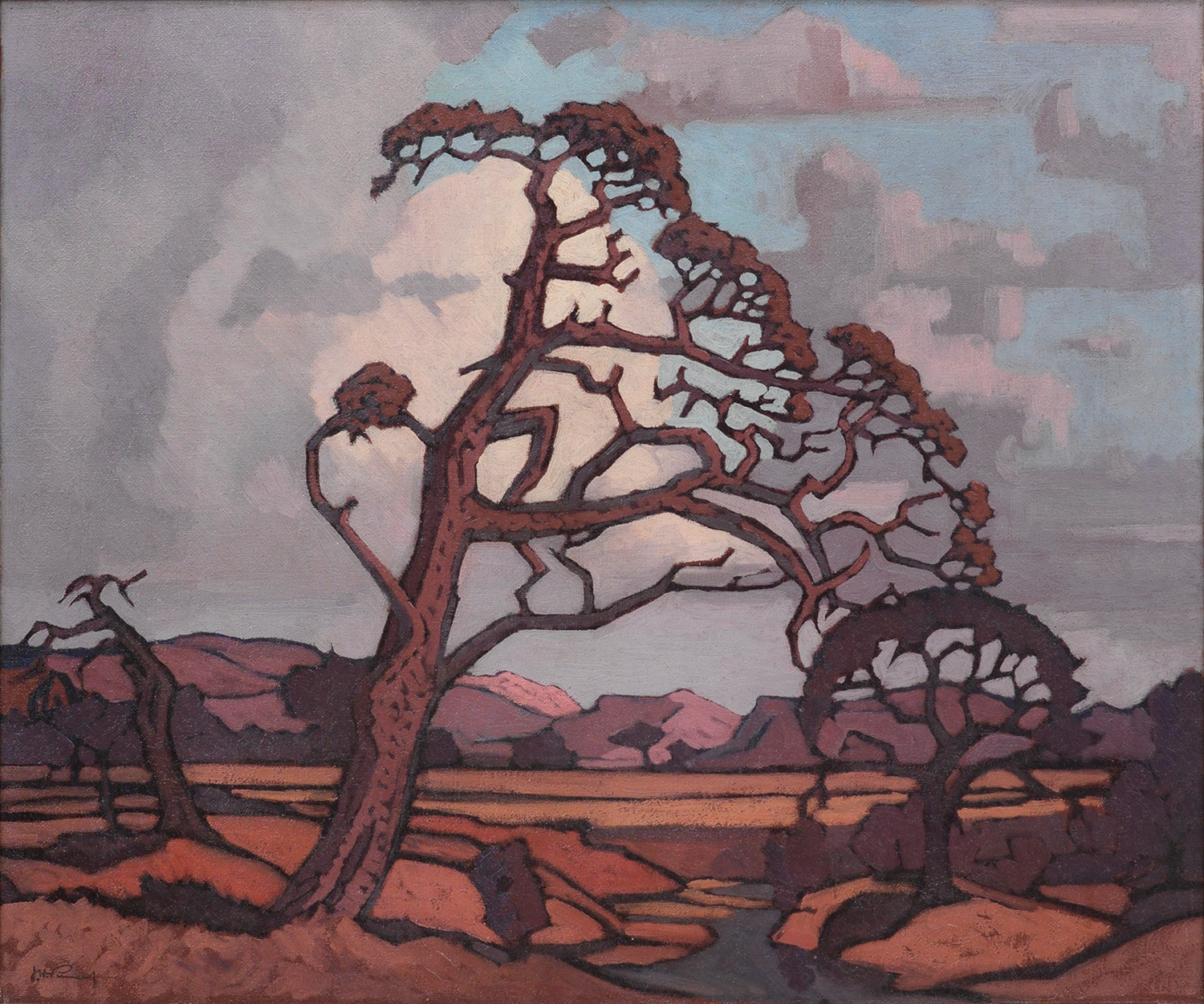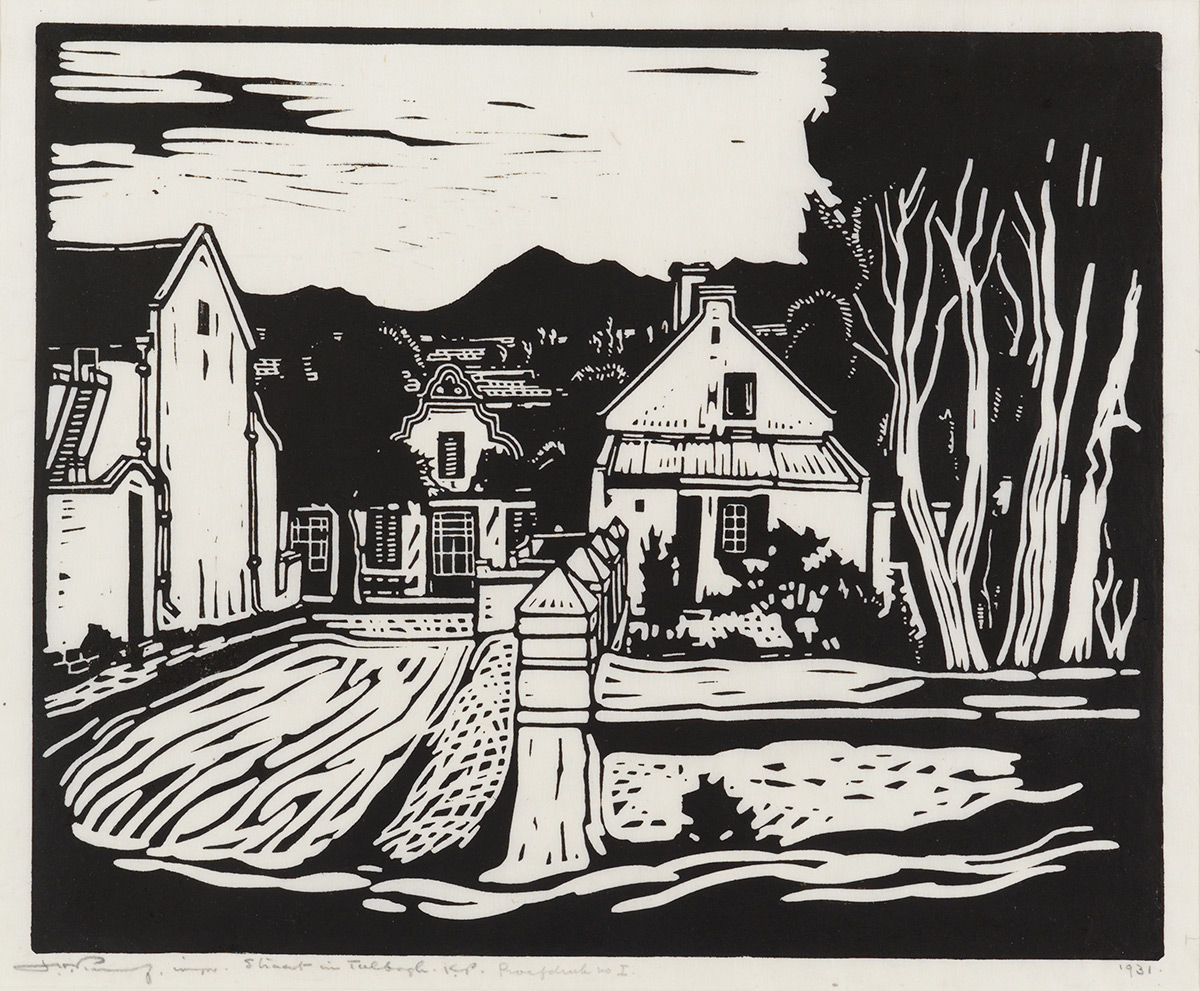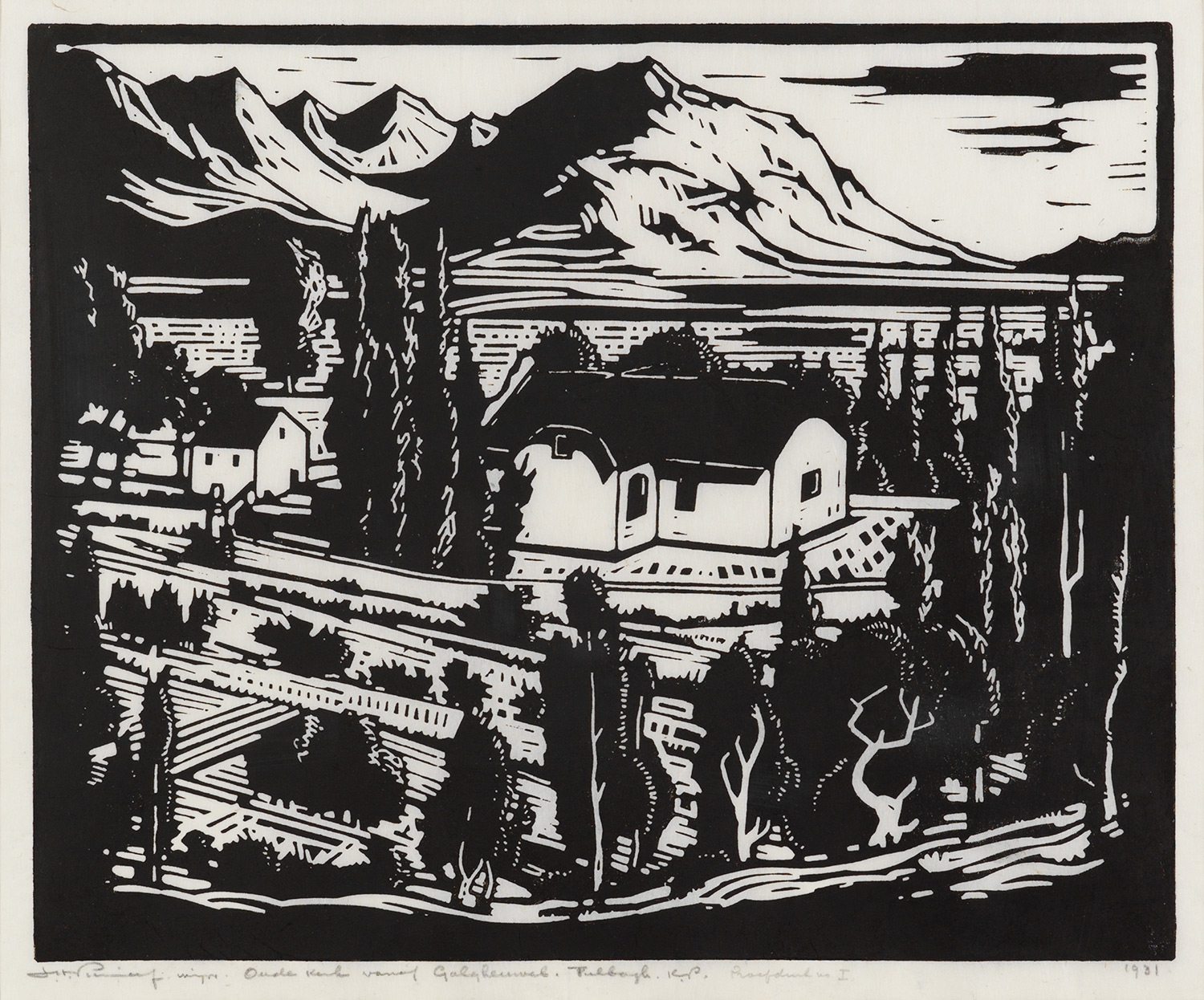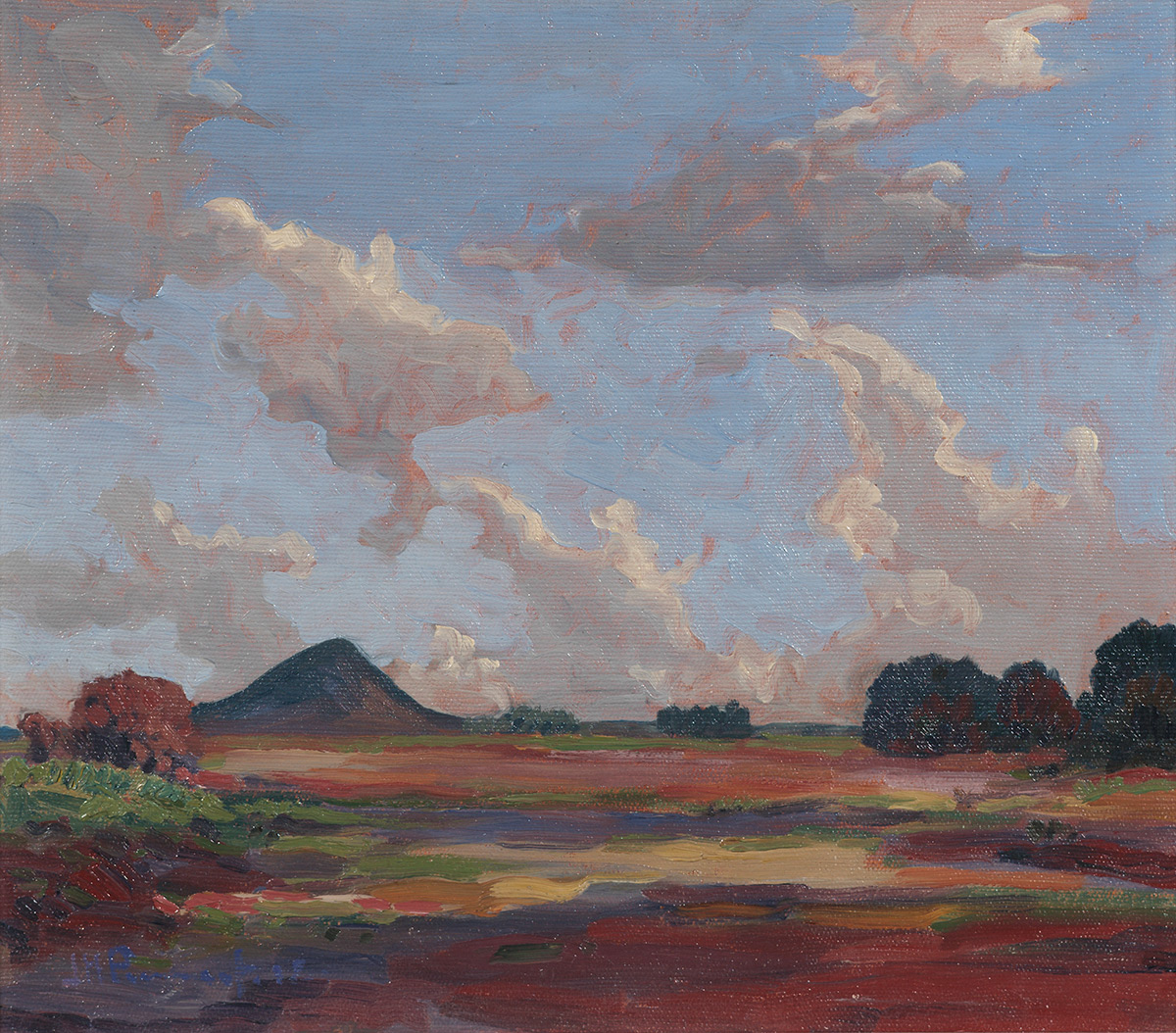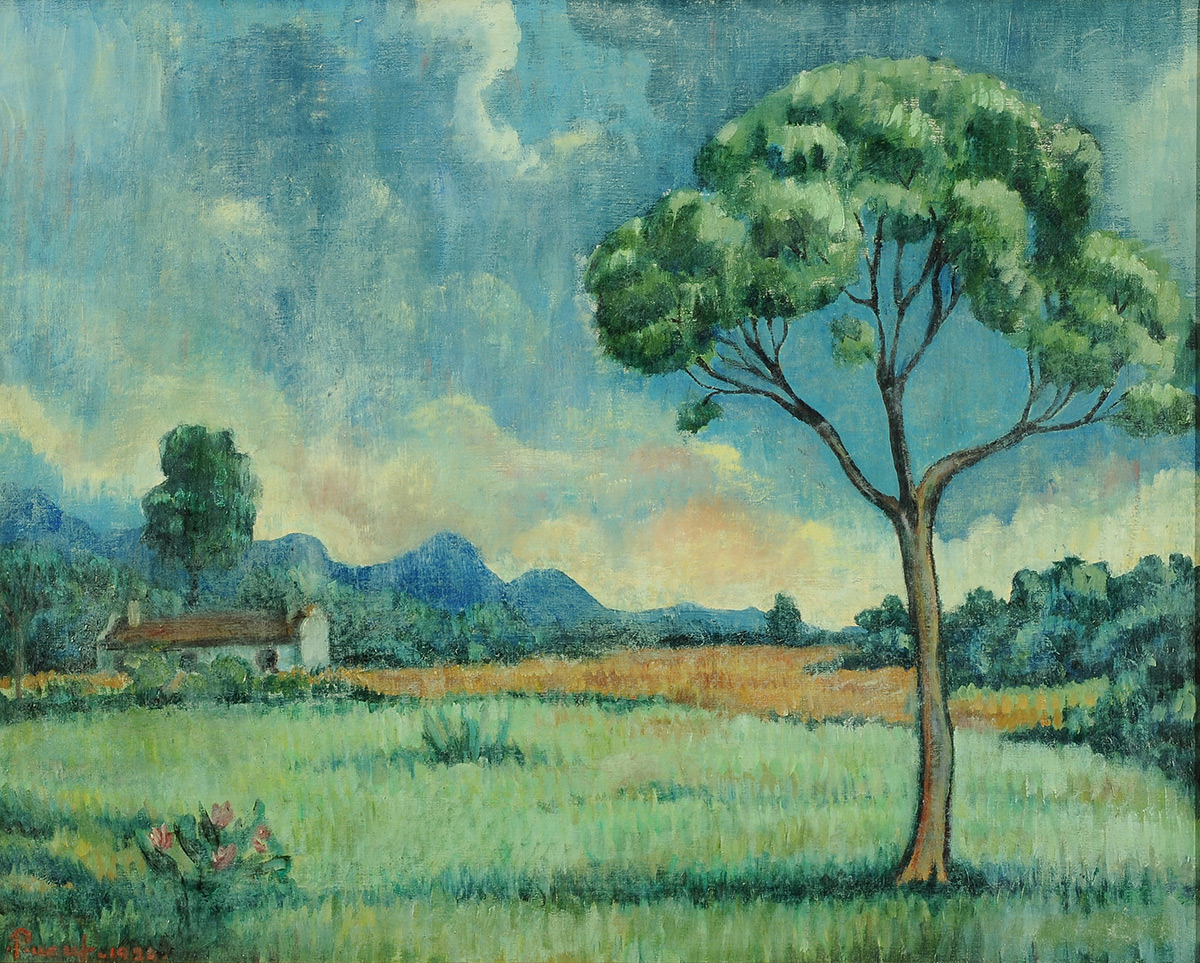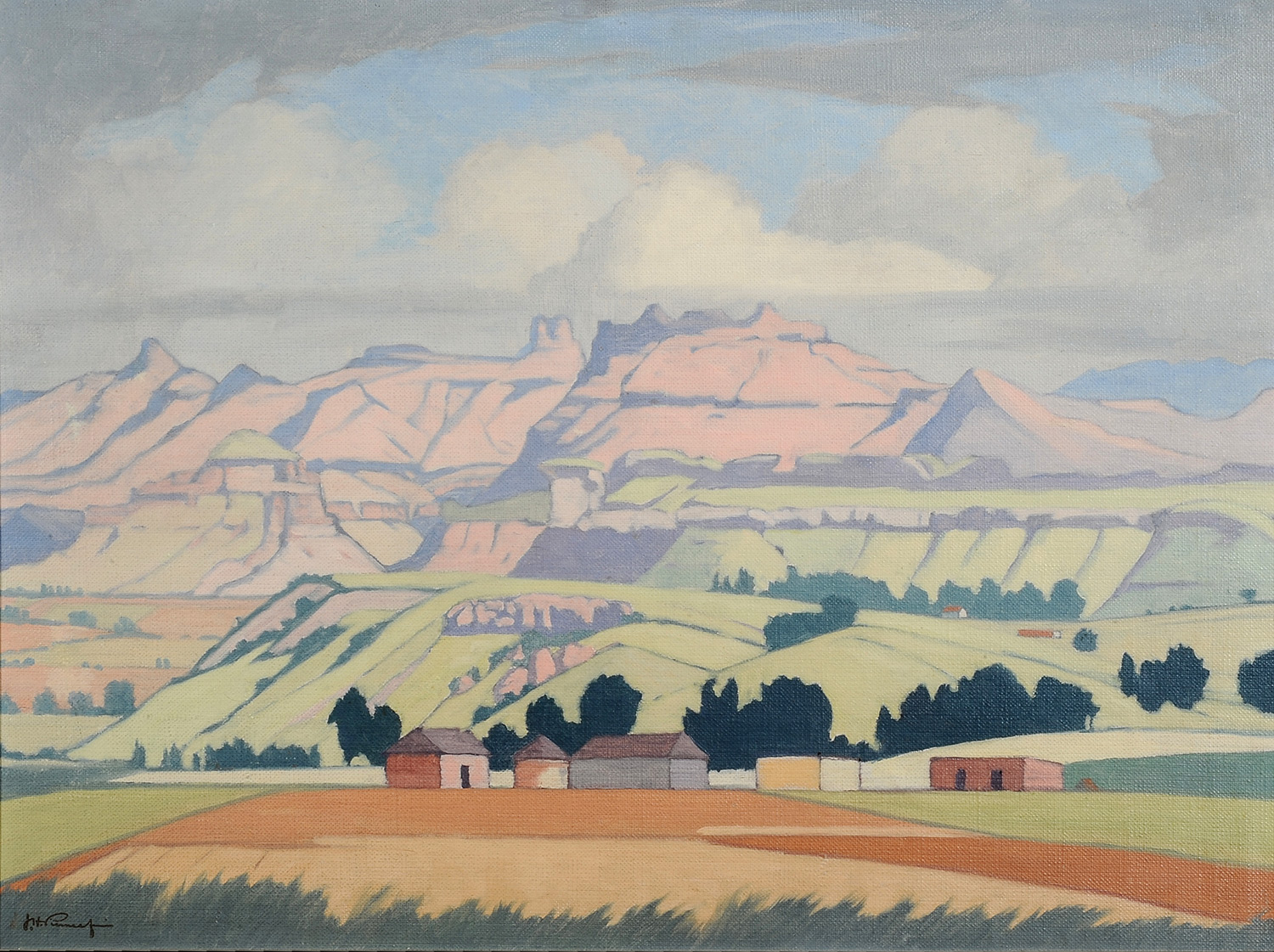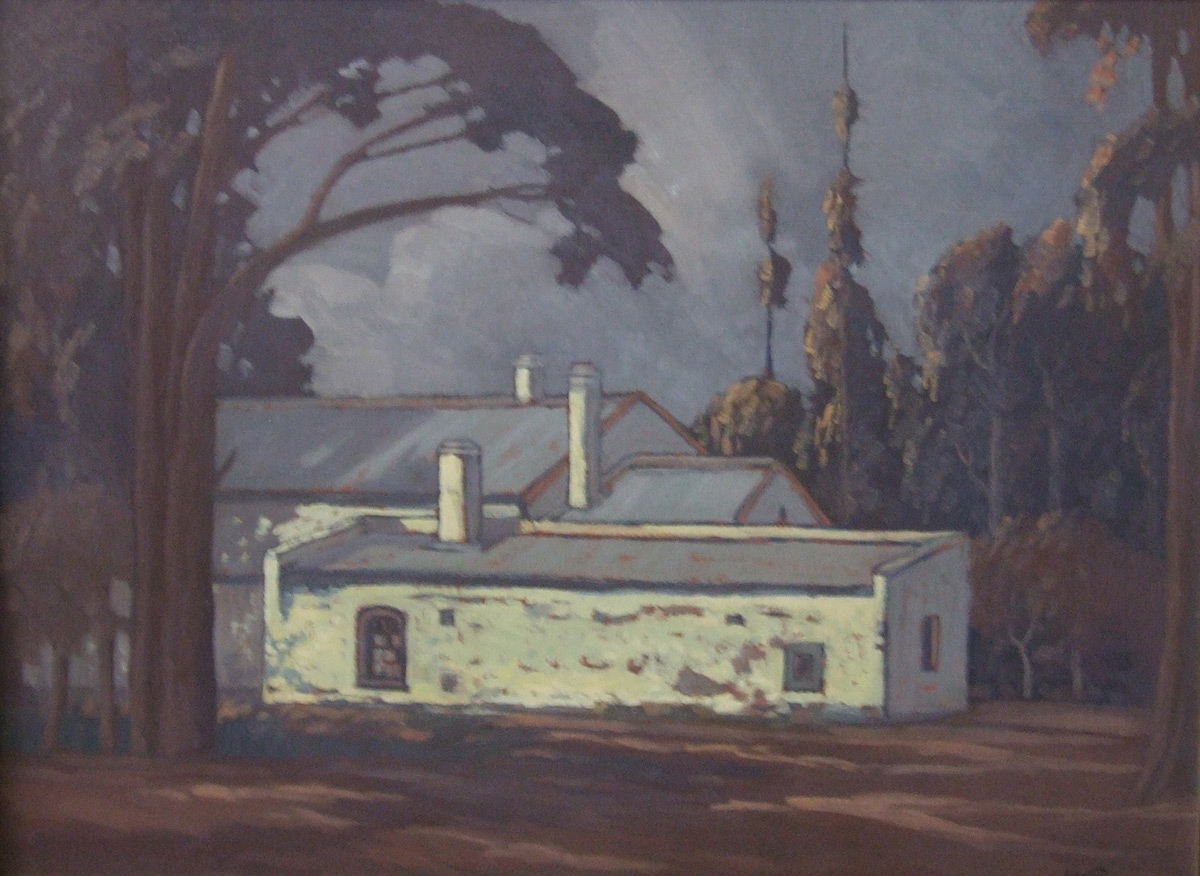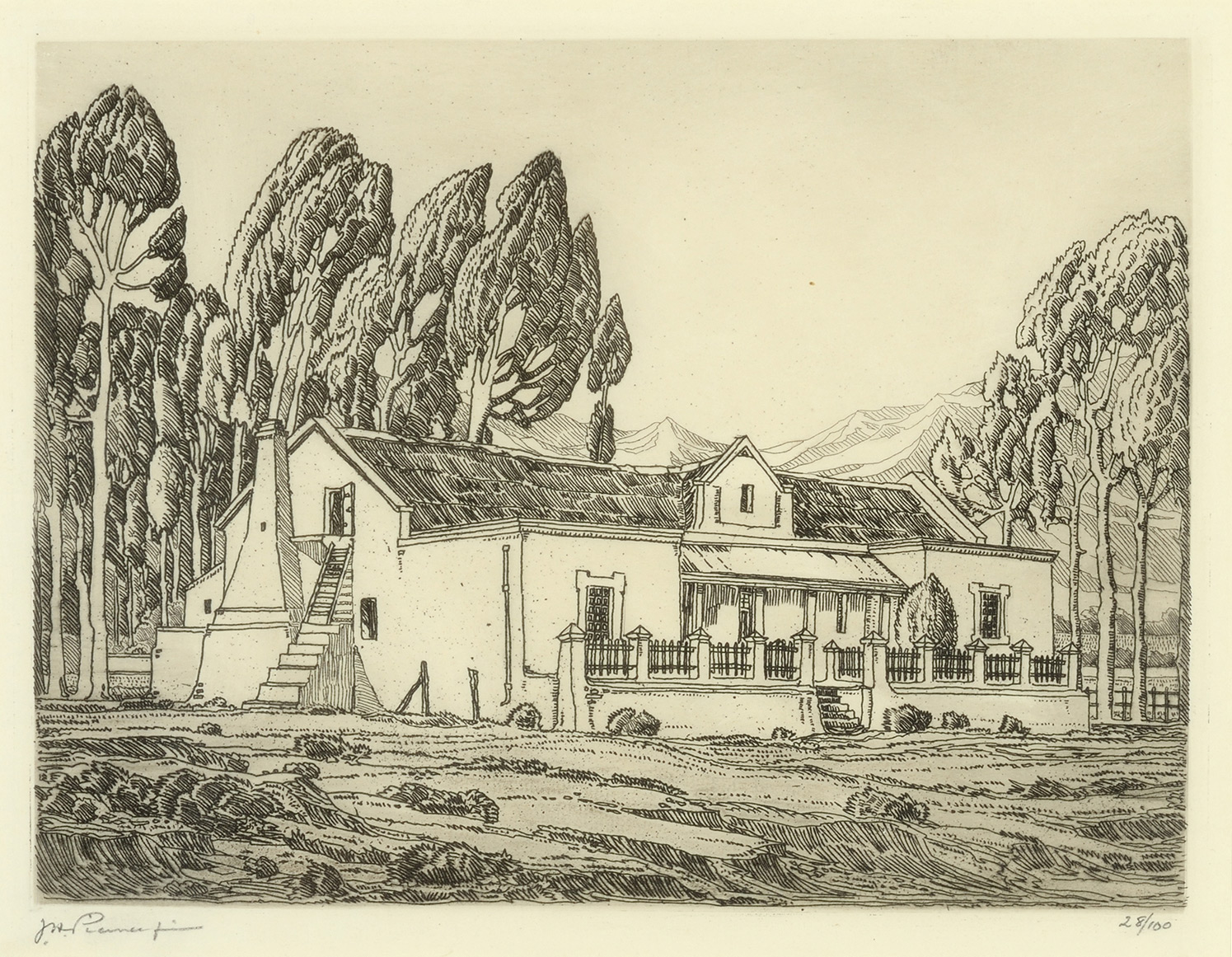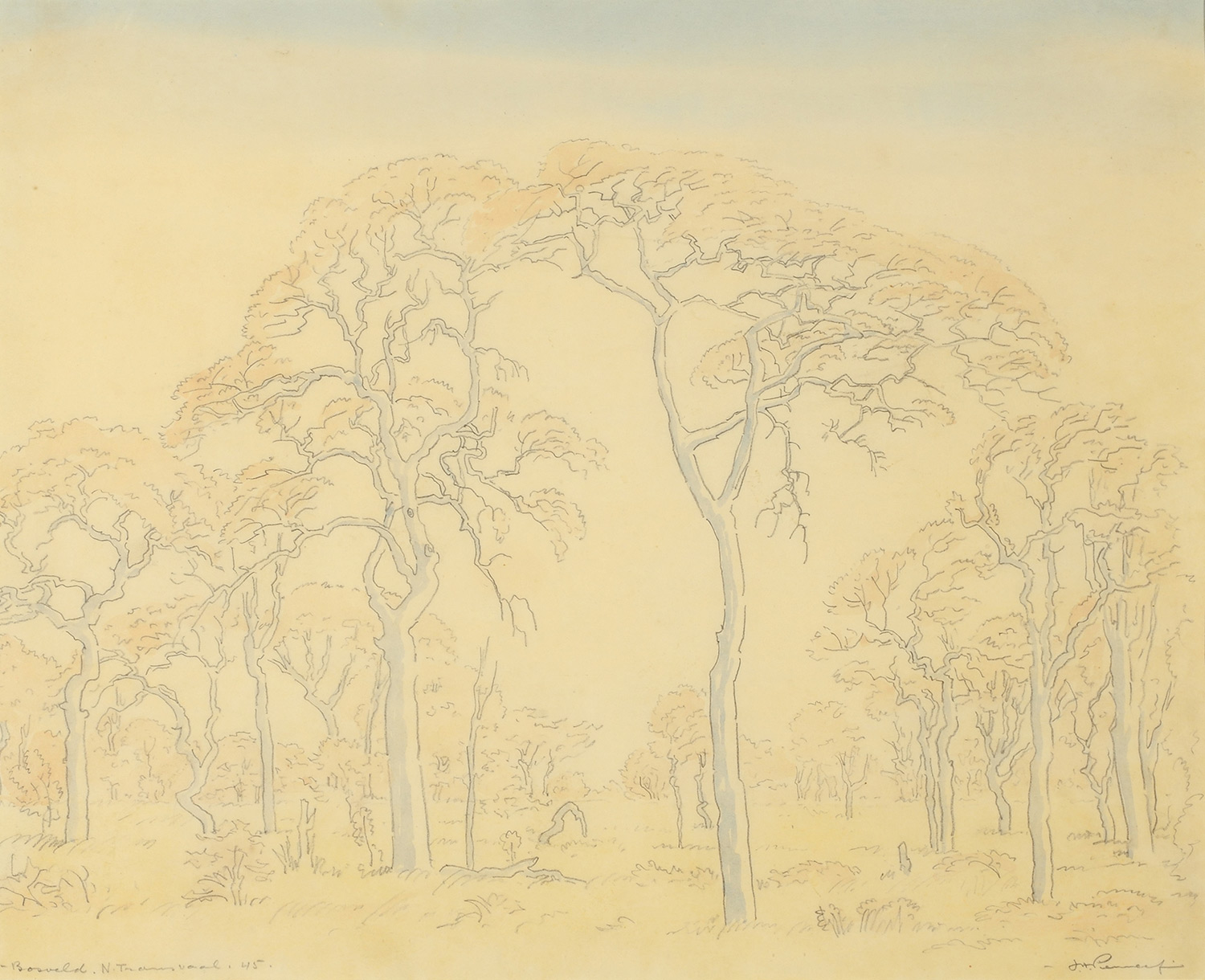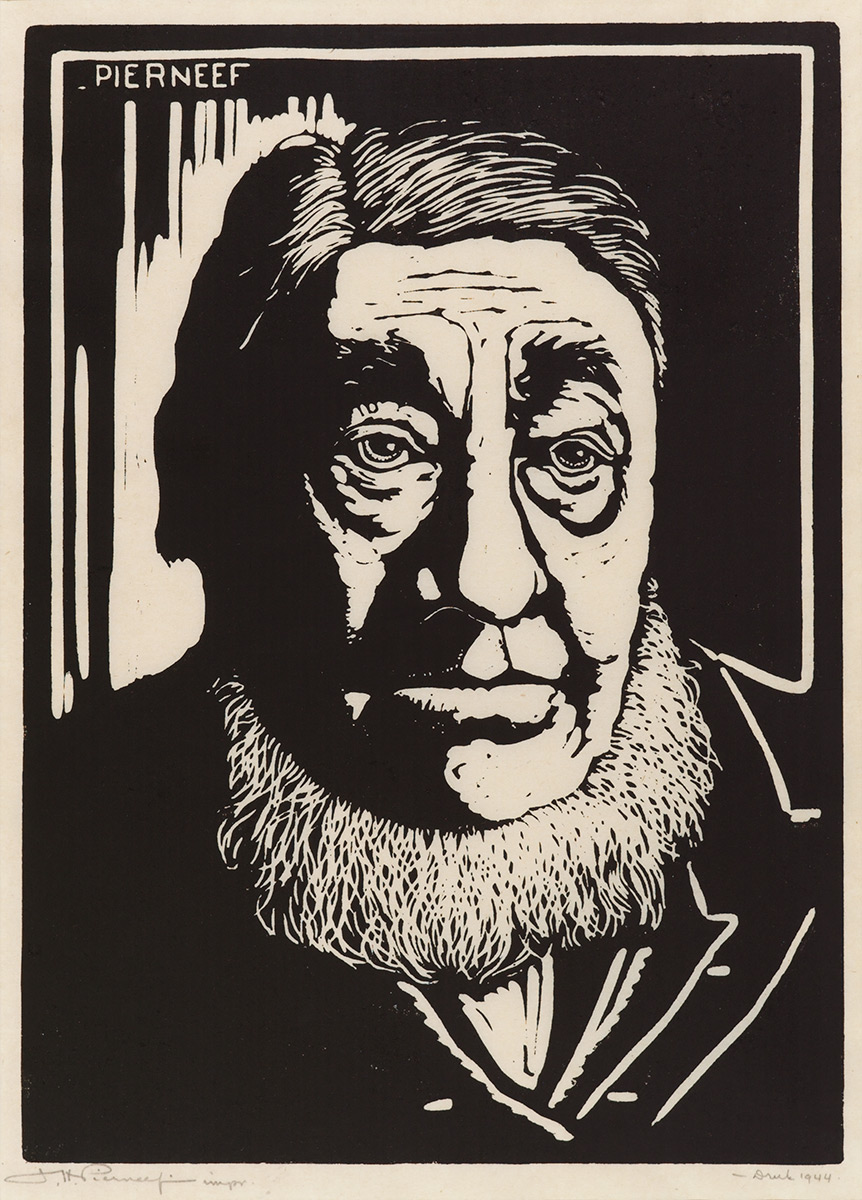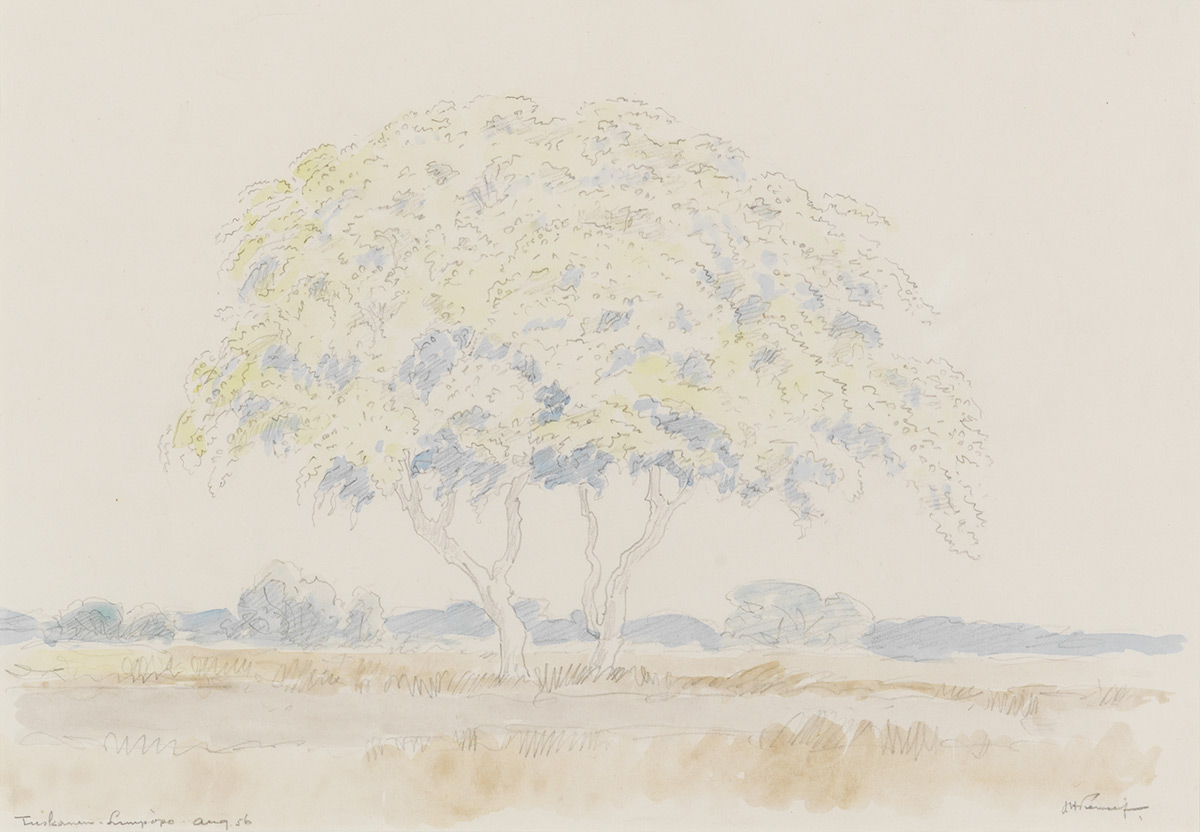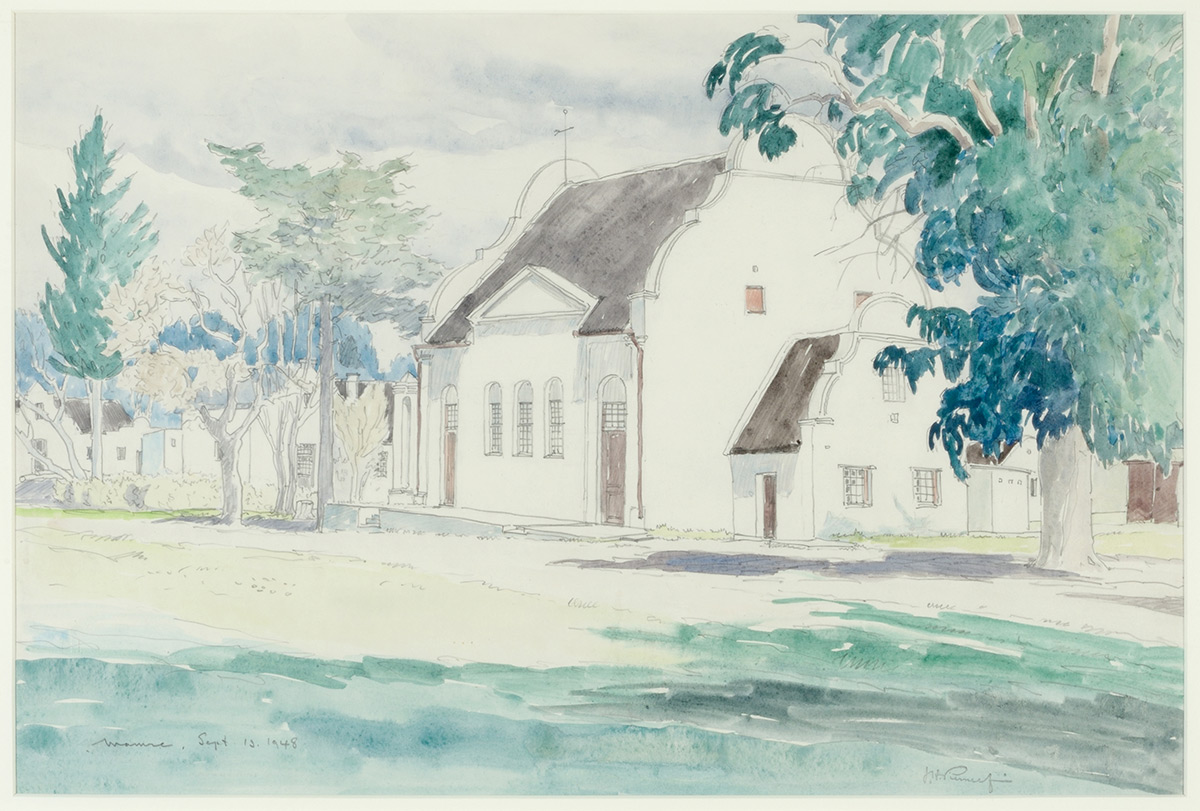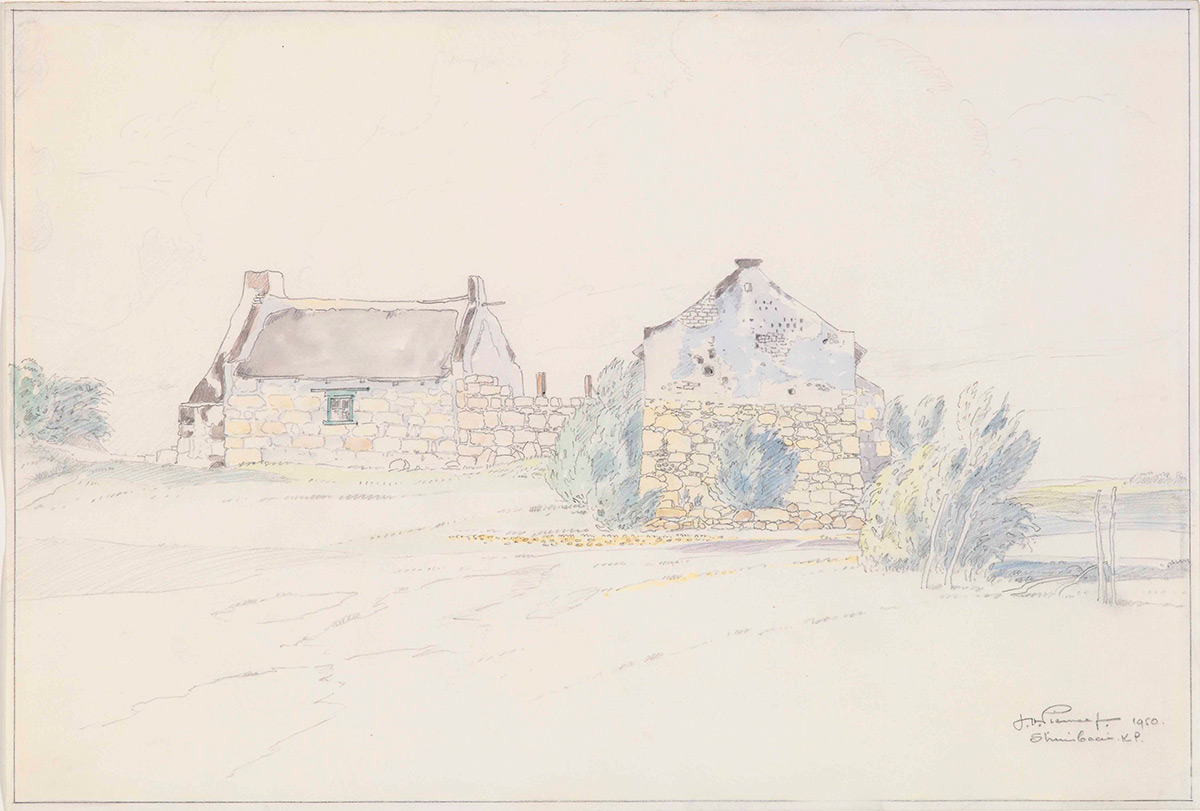Jacobus Hendrik PIERNEEF (1886 – 1957)
BIOGRAPHY
Jacobus Hendrik Pierneef was born in Pretoria to Dutch parents. He started art classes while at high school at the Staatsmodelschool in Pretoria.
Due to the war of 1900 between the Boers and the English, his family decided to move back to the Netherlands, where he continued his schooling. This experience brought Pierneef into contact with the works of the old masters, which had a lasting impression on him.
He studied part time at the Rotterdamse Kunsakademie before returning to South Africa at the age of 18. Back in Pretoria, he crossed paths with other already established artists like Anton van Wouw, Hugo Naude and Frans Oerder, as well as the Irish artist George Smithard who played an important role in teaching him graphic mediums, like etching and linocuts. Pierneef exhibited his work for the first time as part of a popular group exhibition with Van Wouw and Naude.
In 1910, at the age of 23, Pierneef married 35-year-old Agatha Delen against all advice from both families. He worked at the State Library at night and painted in his studio during the day. It was his first solo exhibition in Pretoria in 1913 that won him the glowing reviews that propelled his career forward.
During this early period, he did various illustrations for a number of periodicals and books including Die Brandwag in 1917 and The Independent in 1919.
In 1918, after nine years at the State Library, Pierneef started a career as an art lecturer at the Heidelberg College of Education – and the following year, also started teaching drawing at the Pretoria College of Education. His new career as an art lecturer didn’t work out as he had planned since the curriculum and the Department of Education’s system was based heavily on the English system, which he didn’t believe in. He felt that the South African artists should follow their own style and set of rules. He resigned and became a full-time artist.
Pierneef’s focus was on monumental aspects of the natural world. He eschewed the soft, painterly style of the Cape artists in favour of a stark and linear vision. In his work of the 1910s and 1920s, he sometimes revealed evidence of Impressionist and Post-Impressionist influence, using an impasto brushstroke which drew attention to the textured surface.
One of Pierneef’s inheritances from Impressionist landscapes was his ‘blonde’ colour range. The light and colour of his paintings convey the hot sun of the Highveld and its bleaching effects on the landscape. Intense tonal contrasts between light and shade are very striking in many of his paintings.
Pierneef’s wife struggled with her mental health and also started to lose her sight. Her increasing dependence on him seemed to repel him deeper into his work and he toured the country, lecturing and exhibiting extensively.
In 1921, Pierneef exhibited successfully in Stellenbosch and in Cape Town. Just two years after becoming a full-time artist, he was gaining widespread recognition for his work and was setting the trend for a unique South African style.
In 1923, he visited Namibia and had an exhibition of more than 30 works just two months after his arrival there. He sketched extensively for paintings that which would later be completed in his studio.
Still experiencing financial problems, he had to do various odd jobs and started working for a Mr Johan Schoeman at the Hartebeespoort Dam, on a project to sell the land around the dam. He stayed in the Hotel Agnes, where met his second wife, May Schoep – a Dutch woman. In 1923, he got divorced from his first wife and, in 1924, he married again.
In 1925, the couple travelled to Europe, where Pierneef worked hard to promote himself and to learn about the different art movements. He also had an exhibition in the Netherlands. The couple returned on a ship which sailed along the East Coast of Africa and Pierneef sketched the ports where they docked.
In 1928, Pierneef shocked the traditionalists by including some abstract modern and, as some called them ‘Futuristic’, works in an exhibition. These were not well accepted and, after bad reviews from people like Van Wouw, he had to revert back to his known style. By this stage, Pierneef had evolved a distinctive and striking style in which a smooth surface took precedence and bold shapes, delineated in striking outline, predominated. In these ‘classic’ Pierneef works, trees, rocky outcrops and majestic cloud formations are the basis of a decorative transformation of landscape into art.
In 1929, he was commissioned to paint 28 wall panels on the inside of the new Johannesburg Station Building. The panels, which he completed in 1932, are seen as one of the highlights of his career. In 1933, he received his second commission to do seven murals for South Africa House in London, which he finished in 1934.
In a long and prolific career, Pierneef worked almost entirely in the field of landscape art, depicting either an uninhabited landscape or one where trees and landmasses part to reveal glimpses of architecture. The human figure is absent from his art.


